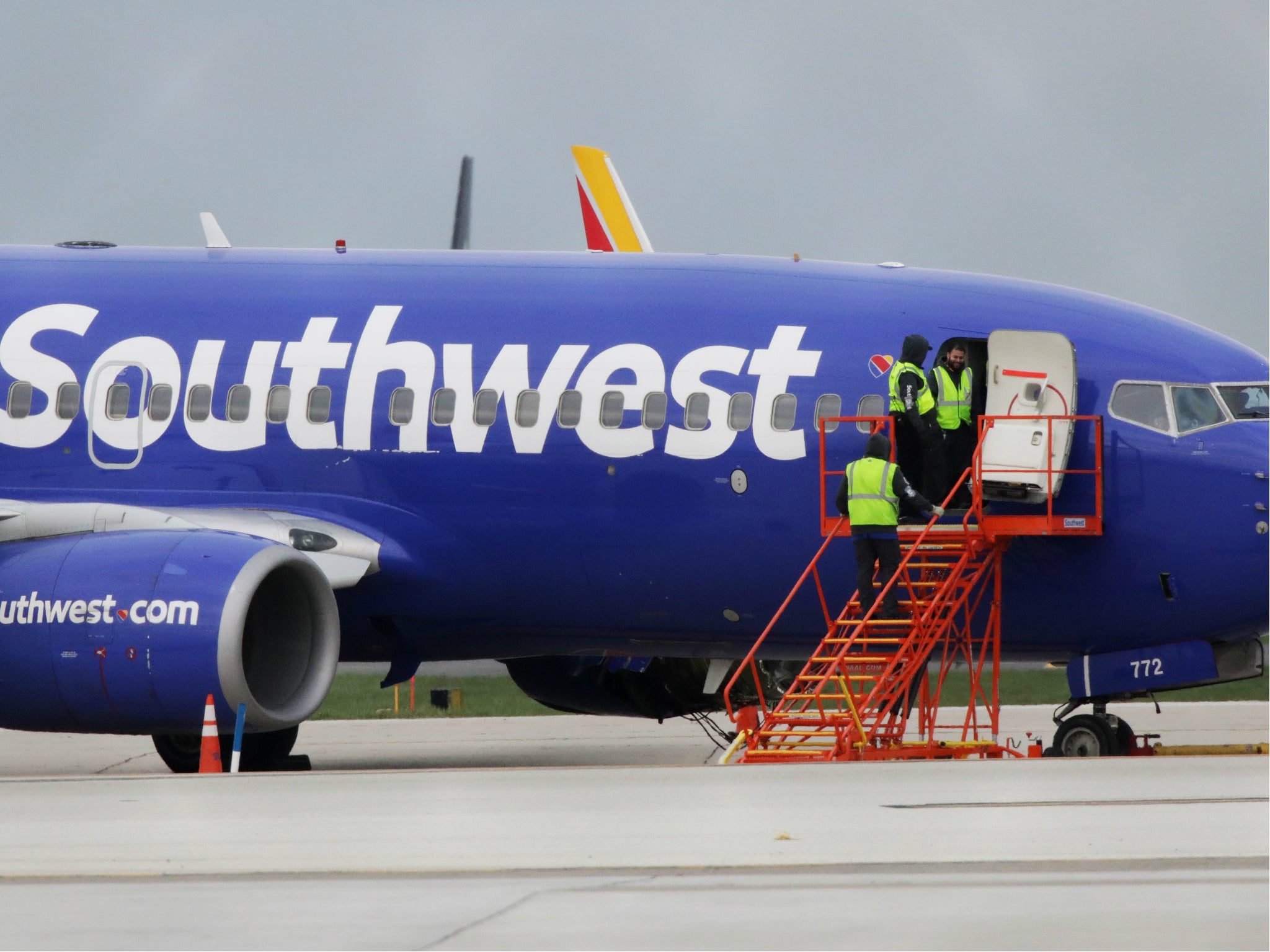Second Southwest airlines flight forced to make emergency landing after bird strike
No injuries have been reported

Your support helps us to tell the story
From reproductive rights to climate change to Big Tech, The Independent is on the ground when the story is developing. Whether it's investigating the financials of Elon Musk's pro-Trump PAC or producing our latest documentary, 'The A Word', which shines a light on the American women fighting for reproductive rights, we know how important it is to parse out the facts from the messaging.
At such a critical moment in US history, we need reporters on the ground. Your donation allows us to keep sending journalists to speak to both sides of the story.
The Independent is trusted by Americans across the entire political spectrum. And unlike many other quality news outlets, we choose not to lock Americans out of our reporting and analysis with paywalls. We believe quality journalism should be available to everyone, paid for by those who can afford it.
Your support makes all the difference.Another Southwest Airlines flight has been forced to make an emergency landing, this time in Nashville, Tennessee, as a result of a bird strike.
“The captain in command declared an emergency and safely landed the flight,” a spokesperson for the airline said. The airline told CBS News about the Phoenix, Arizona-bound flight: "We've confirmed flight 577 departing Nashville experienced a bird strike shortly after takeoff," adding that its "local Nashville Employees are working diligently to accommodate those passengers on to their destination".
The aircraft has been taken out for service for maintenance just one day after a disastrous emergency landing in Philadelphia, Pennsylvania yesterday.
A Southwest plane’s engine had exploded during the flight from New York to Dallas, Texas, and shrapnel from it broke a window, sucking one passenger halfway out. Fellow passengers scrambled to help pull her back in but ultimately Jennifer Riordan, a Wells Fargo bank executive and mother of two from Albuquerque, New Mexico, perished as a result of her injuries. Seven other passengers had suffered minor injuries.
Retired registered nurse Peggy Phillips told a local television station that she performed CPR on Ms Riordan for about 20 minutes until the plane landed in Philadelphia. "If you can possibly imagine going through the window of an airplane at about 600 mph and hitting either the fuselage or the wing with your body, with your face, then I think I can probably tell you there was significant trauma," Ms Phillips said.
As a result of the Philadelphia incident, the airline said it was accelerating its existing engine inspection program and conducting ultrasonic inspections of fan blades of the CFM56 engines on all of its the 737 jets. Inspections are expected to be completed within 30 days and minimal flight disruptions may result, according to Southwest. The National Transportation Safety Board is also conducting an investigation, which could take 12 to 15 months to complete. Preliminary results concluded that the engine exploded due to "metal fatigue".
Further details on the Nashville landing have not been released as yet, but plane engines are designed to withstand the impact of one bird and pilots are able to fly with one engine. Though, a strike can disable an engine and given the length of the flight to Phoenix, that may have been what prompted the emergency landing. While bird strikes are not incredibly common, engine manufacturers and pilots design and train to take them into account.
Patrick Smith, a US pilot and author of the book Cockpit Confidential, told The Telegraph last year: “Birds don't clog an engine but can bend or fracture the internal blades, causing power loss. The heavier the bird, the greater the potential for harm. Flying at 250 knots (the maximum allowable below 10,000 feet, where most birds are found) hitting an average-sized goose will subject the plane to an impact force of over 50,000 pounds. Even small birds pose a threat if struck en masse".
In September 2017, a Japan Airlines flight was forced to make an emergency landing in Tokyo as a result of a bird strike. The most infamous bird strike resulted in an incident dubbed the "Miracle on the Hudson" in January 2009. A US Airways flight was attempting to fly from New York's LaGuardia airport to Charlotte, North Carolina, when it hit a flock of Canadian geese just minutes after takeoff. Unable to reach any of the local airports safely, pilot Chelsea 'Sully' Sullenberger decided to make a water landing on the Hudson River near midtown Manhattan where all 155 passengers were rescued.
Subscribe to Independent Premium to bookmark this article
Want to bookmark your favourite articles and stories to read or reference later? Start your Independent Premium subscription today.
Join our commenting forum
Join thought-provoking conversations, follow other Independent readers and see their replies
Comments